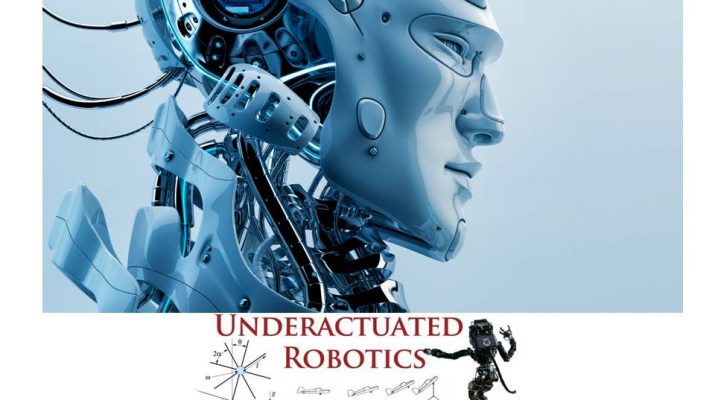Robots today move far too conservatively, and accomplish only a fraction of the tasks and achieve a fraction of the performance that they are mechanically capable of.
In many cases, we are still fundamentally limited by control technology which matured on rigid robotic arms in structured factory environments. The study of underactuated robotics focuses on building control systems which use the natural dynamics of the machines in an attempt to achieve extraordinary performance in terms of speed, efficiency, or robustness.
MIT 6.832 Underactuated Robotics, Spring 2009
Instructor: Russell Tedrake
Lecture 1 |Introduction
Lecture 2 | The Simple Pendulum
Lecture 3 | Optimal control of the double integrator
Lecture 4 | Optimal control of the double integrator (continued)
Lecture 5 | Numerical optimal control (dynamic programming)
Lecture 6 | Acrobot and cart-pole
Lecture 7 | Swing-up control of acrobot and cart-pole systems
Lecture 8 | Dynamic programming (DP) and policy search
Lecture 9 | Trajectory optimization
Lecture 10 | Trajectory stabilization and iterative linear quadratic regulator (iLQR)
Lecture 11 | Walking
Lecture 12 | Walking (continued)
Lecture 13 | Running
Lecture 14 | Feasible motion planning
Lecture 15 | Global policies from local policies
Lecture 16 | Introducing stochastic optimal control
Lecture 17 | Stochastic Gradient Descent
Instructor: John W. Roberts
Lecture 18 | Stochastic Gradient Descent 2
Instructor: John W. Roberts
Lecture 19 | Temporal difference learning
Lecture 20 | Temporal difference learning with function approximation
Lecture 21: Policy improvement
Lecture 22 | Actor-Critic methods
Lecture 23 | Case studies in computational underactuated control
Russ Tedrake is a Full Professor in the Department of Electrical Engineering and Computer Science at MIT, and a member of the Computer Science and Artificial Intelligence Lab. He received his B.S.E. in Computer Engineering from the University of Michigan, Ann Arbor, in 1999, and his Ph.D. in Electrical Engineering and Computer Science from MIT in 2004, working with Sebastian Seung. After graduation, he spent a year with the MIT Brain and Cognitive Sciences Department as a Postdoctoral Associate. During his education, he has spent time at Microsoft, Microsoft Research, and the Santa Fe Institute.

Professor Tedrake’s research group is interested in underactuated motor control systems in animals and machines that are capable of executing dynamically dexterous tasks and interacting with uncertain environments. They believe that the design of these control systems is intimately related to the mechanical designs of their machines, and that tools from machine learning and optimal control can be used to exploit this coupling when classical control techniques fail. Current projects include robust and efficient bipedal locomotion on flat terrain, multi-legged locomotion over extreme terrain, flapping-winged flight, and feedback control for fluid dynamics.

